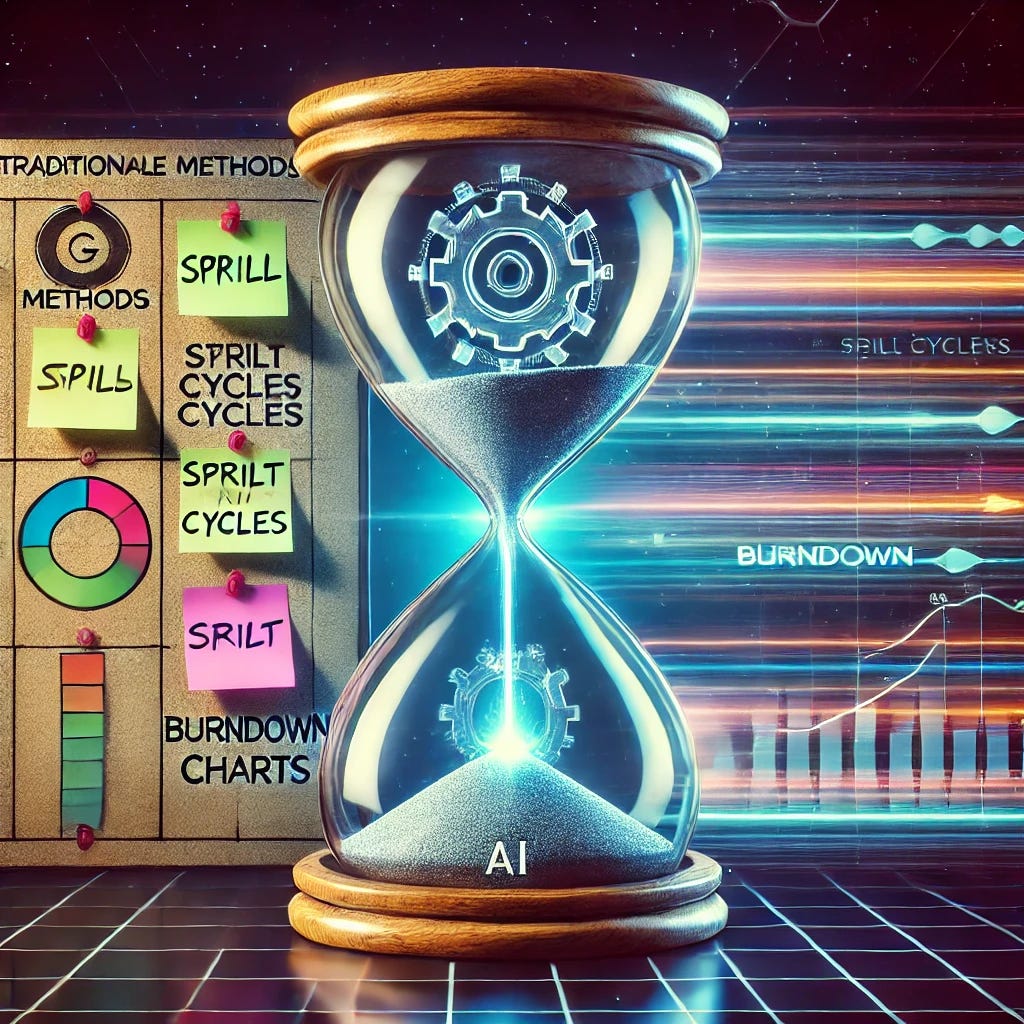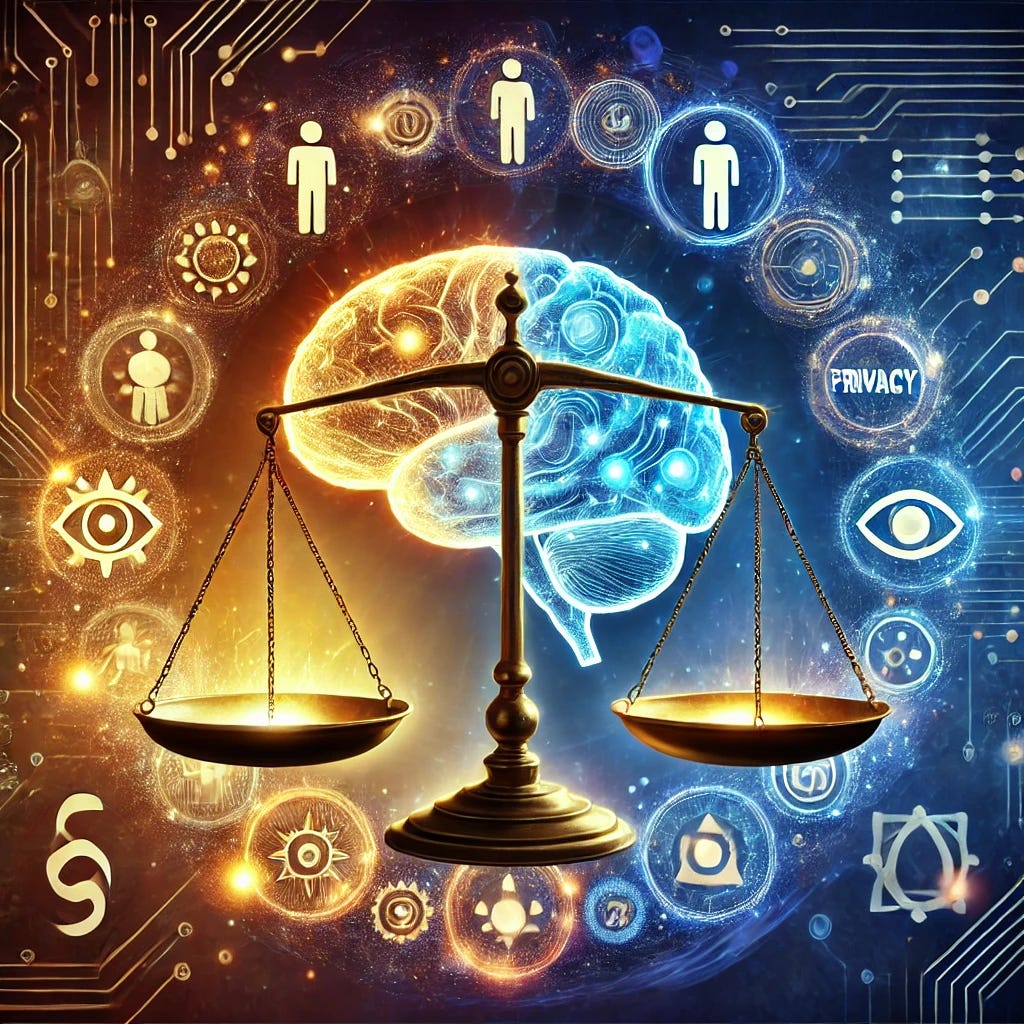In my recent deep dive into tech podcasts, I've encountered fascinating discussions about how AI is reshaping product management. Rather than just following industry headlines, I've been carefully noting the themes and insights that repeatedly surface across different conversations with tech leaders and innovators. What's particularly striking is how these discussions reveal patterns about where AI technology is actually heading – not just where people think it might go.
The conversations that caught my attention weren't about abstract possibilities, but rather concrete developments that are already transforming how we approach product development. From Zuckerberg's insights about interoperable AI systems to emerging discussions about compact, AI Agents, these podcasts have highlighted several key trends that deserve our attention.
In this newsletter, I'll share some most compelling trends I've identified from these discussions. These aren't just theoretical concepts – they're developments that are actively reshaping how products are conceived, built, and managed.
The Rise of AI Agents: Collaborative Co-Creators
The concept of AI agents as collaborative co-creators marks a paradigm shift in how products are conceived and developed. These autonomous AI entities are poised to revolutionize cross-functional teamwork and decision-making processes, particularly as open-source models democratize access to AI capabilities.
Interoperable AI Ecosystems
Meta CEO Mark Zuckerberg's vision of AI systems collaborating across organizational boundaries is becoming a reality. As he emphasized in a 2024 open letter: "Open source will ensure that more people around the world have access to the benefits and opportunities of AI, [preventing] power [from being] concentrated in a handful of giants." This philosophy underpins Meta's Llama models, which Zuckerberg described as "an inflection point where open-source AI will become the industry standard, similar to Linux."
This interoperability is already manifesting in practical applications:
An AI agent managing user analytics could negotiate API terms with a payment gateway's AI agent, significantly reducing engineering overhead
AI-driven customer service agents, like those implemented by Klarna, demonstrate the potential for efficiency gains in user interaction
Meta's hardware initiatives, such as the Ray-Ban Meta glasses, showcase how AI can "see what you see and hear what you hear, creating contextual awareness that unlocks richer interactions"—enabling seamless integration with third-party systems
Specialized AI Agents: The Next Billion-Dollar Frontier
As evolution of AI is shifting from monolithic models to specialized, targeted agents that excel at specific tasks. While Large Language Models (LLMs) like GPT-4 capture headlines, the real billion-dollar opportunities lie in vertical-specific AI agents that combine compact models with deep domain expertise.
The Rise of Specialized Agents
Casetext's $650M acquisition demonstrates the power of focused AI agents in legal tech. As their CTO notes: "We achieved 100% accuracy on deposition analysis through domain-focused training, significantly outperforming general-purpose LLMs." This success highlights a crucial insight for founders: vertical depth trumps horizontal breadth.
Key trends enabling this shift:
Compact, efficient models (1B-500M parameters) optimized for specific domains
On-device deployment reducing cloud dependencies and costs
Industry-specific data advantages creating defensible moats
Market Signals from Y Combinator
YC's recent batches reveal a clear pattern. According to Paul Graham: "The most promising startups aren't building general AI - they're building highly specialized agents that solve specific, valuable problems." Examples include:
Aizip's low-cost edge AI solutions show potential for compliance applications
Nexa's Octopus v3 processing retail inventory in real-time with 900M parameters
Solugene's chemical process models leveraging proprietary industry data
The Billion-Dollar Playbook
Successful AI agent startups share common characteristics:
Deep vertical focus rather than broad horizontal applications
Proprietary data advantages creating natural moats
Edge-native architectures reducing deployment costs
Gradual capability expansion starting with specific workflows
Strategic Implications for Product Leaders
For product managers and founders, this trend presents clear opportunities:
Focus on industry-specific problems where specialized knowledge creates value
Leverage edge deployment to reduce costs and increase privacy
Build data moats through user interaction and feedback loops
Start narrow and expand based on user needs
Challenges and Opportunities
The emergence of AI agent ecosystems presents both challenges and opportunities for product managers:
New Communication Protocols: It will be crucial to develop standards for "AI-to-AI" communication, similar to API standards but optimized for machine reasoning.
Security and Oversight: As Zuckerberg notes, adversarial AI systems are already probing each other's vulnerabilities, highlighting the need for robust security measures.
Ethical Considerations: Product managers must architect systems where AI agents can safely negotiate permissions, validate outputs, and audit decisions.
As we look ahead, the next wave of billion-dollar companies will not be built on general-purpose AI but on specialized agents that combine deep domain expertise with efficient, targeted models. The opportunity is clear—the question is who will seize it first.
The Evolving Role of Product Managers
As AI reshapes the product development landscape, the role of product managers is undergoing a significant transformation. Technical expertise and strategic vision are becoming increasingly intertwined.
From User Story Curators to Technical Architects
Claire Vo's assertion that PM roles will bifurcate into "IC specialists" and "strategic orchestrators" reflects the growing technical demands of AI-augmented workflows. This evolution demands new skills and competencies:
Generative Prototyping: Using multimodal AI to convert rough sketches into interactive mockups
Data Pipeline Literacy: Understanding how to structure training data for domain-specific models
AI Ethics Auditing: Identifying and mitigating bias in automated decision systems
Synthetic Users and AI-Driven Discovery
The concept of synthetic users is revolutionizing user research and product testing. This approach allows for rapid iteration and exploration of edge cases that might be impractical or impossible with traditional methods.
Advantages of Synthetic User Testing
Scale and Speed: Generate thousands of synthetic user profiles to stress-test products
Edge Case Exploration: Simulate niche user segments that might be difficult to recruit in real life
Cost-Effective Iteration: Rapidly test and refine features before costly real-world studies
Potential Pitfalls
While promising, synthetic user testing comes with caveats:
Echo Chambers: Models trained on existing data may perpetuate biases and overlook genuine innovations
Ethical Considerations: The use of synthetic users in regulated industries like healthcare or finance raises legal questions
Authenticity Decay: As synthetic and organic content blend, traditional validation metrics may become unreliable
AI-First Product Paradigms
The shift from "AI-enhanced" to "AI-native" products is redefining what it means to create value in the digital age. This paradigm demands new design frameworks and strategic approaches.
Emerging Design Principles
Anticipatory UX: Interfaces that predict user intent and auto-complete workflows
Self-Optimizing Architectures: Systems that A/B test their own UI/API configurations in real-time
Ethical Transparency: Built-in explanations for AI decisions that balance clarity with IP protection
Strategic Considerations
Product managers must navigate new strategic terrain:
AI Dependency Management: Balancing the benefits of third-party AI services against the risks of vendor lock-in
Data Strategy: Developing frameworks for continuous learning and model improvement
User Trust: Building products that leverage AI capabilities while maintaining user agency and trust
The Agile Obsolescence Crisis
Traditional agile methodologies are struggling to keep pace with AI's rapid iteration capabilities. As Claire Vo observes: "AI compresses development cycles so dramatically that traditional sprint planning becomes obsolete." This acceleration is forcing a reevaluation of long-standing product development practices.
Challenges to Traditional Methodologies
Quality Assurance: Validating AI-generated code and features at scale has become increasingly complex as development cycles shrink from weeks to hours, requiring new automated testing paradigms
Stakeholder Alignment: Ensuring executives and boards can comprehend and approve AI-driven pivots when changes occur at unprecedented speeds, often faster than traditional approval processes can accommodate
Technical Debt: Balancing rapid iteration with long-term code maintainability becomes critical as AI systems generate and modify code at rates that can quickly accumulate technical complexity
Emerging Solutions
Product teams are exploring new approaches to manage AI-driven development:
AI-Augmented Governance: Automated compliance checkers and real-time KPI dashboards that can keep pace with accelerated development cycles and provide immediate feedback loops
Continuous Deployment Models: Systems where AI agents push micro-updates autonomously, fundamentally changing how features are rolled out and monitored
Quantum Product Lifecycle Orchestration: Maintaining multiple mutually exclusive product versions simultaneously, allowing for rapid experimentation and iteration across different user segments
The New AI Ethics Frontier
As AI becomes integral to product ecosystems, product managers are increasingly finding themselves at the forefront of ethical decision-making. IBM's open-source toolkit exemplifies emerging solutions, letting teams "audit models for bias using standardized fairness metrics," while Moderna's partnership with OpenAI showcases ethical deployment, using AI to "accelerate drug development while maintaining rigorous safety protocols.”
Emerging Ethical Challenges
Deepfake Proliferation: Developing strategies to detect and mitigate AI-generated spam and malicious content, incorporating standardized fairness metrics and bias detection tools
Jobs Displacement: Navigating the human impact of AI-driven automation and layoffs while maintaining transparency about AI's role in organizational change
Regulatory Compliance: Adapting to rapidly evolving AI governance frameworks across different jurisdictions, leveraging tools like IBM's toolkit to ensure consistent ethical standards
Proactive Approaches
AI Ethics Boards: Cross-functional teams to evaluate the ethical implications of AI features, following examples like Moderna's rigorous safety protocols in AI deployment
Transparency Initiatives: Developing clear communication strategies about AI use in products, including built-in audit capabilities and fairness metrics
Ethical AI Frameworks: Adopting tools like Anthropic's Constitutional AI and IBM's open-source solutions to embed ethical constraints and bias detection into AI systems from the ground up
The industry is moving beyond theoretical ethical discussions to implementing practical, scalable solutions that ensure AI development aligns with human values and safety considerations.
Conclusion: Navigating the AI-Product Nexus
The convergence of AI and product management is not just changing how we build products—it's redefining what products are and how they create value. As Claire Vo insightfully notes: "Your new role isn't to manage products, but to orchestrate AI systems that align technical capabilities with human values." This fundamental shift demands a new breed of product leadership.
Mark Zuckerberg frames the broader vision: "We're building the infrastructure for a world where AI enhances every interaction—responsibly, openly, and at unprecedented scale." This infrastructure requires product managers to evolve beyond traditional boundaries and embrace a more systemic view of innovation.
Key takeaways for product managers:
Embrace AI as a collaborative partner, not just a tool—recognizing that AI systems are becoming active participants in the product development process
Develop a deep understanding of AI capabilities and limitations, particularly in the context of open-source and interoperable systems
Prioritize ethical considerations and user trust in AI-driven products, ensuring responsible deployment at scale
Prepare for rapid iteration and continuous learning as traditional development cycles compress
Cultivate cross-functional expertise spanning technology, design, and strategy to effectively orchestrate AI systems
As we stand on the brink of this AI revolution, product managers have a unique opportunity to shape the future of innovation. The challenge is no longer just about building successful products—it's about architecting AI ecosystems that responsibly enhance human capabilities while remaining true to core human values. By embracing these emerging trends and concepts, we can create products that not only leverage the power of AI but also democratize access to technology and improve lives at an unprecedented scale.








This breakdown on AI agents and their specialized use cases hits the nail on the head. The shift from monolithic LLMs to domainmspecific models feels like the natural evolution of the AI landscape especially with the rise of edge deployment. The example of Casetext shows how narrowing the scope can actually drive better outcomes. Do you see interoperability between these specialized agents as a future standard or will most vertical Ai ecosystems remain siloed?